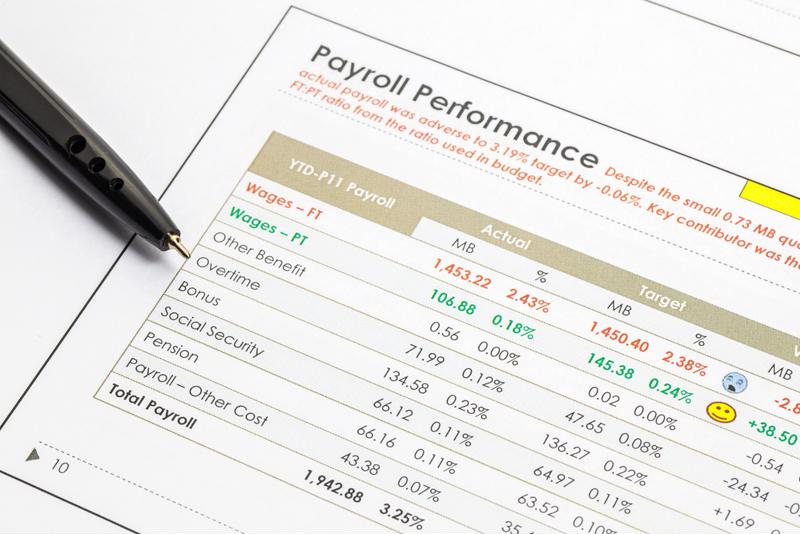
“Streamlining your HR responsibilities is key to departmental efficiency.”
As an HR professional, you know how hard it can be to keep all of your ducks in a row. Managing the long list of human resources tasks, whether they’re annual, quarterly or everyday processes, can be overwhelming.
Right now, for example, you may be in the thick of open enrollment, helping employees understand their options and ensuing they have enrolled in – or waived – coverage. At the same time, you are probably trying to review employee data and payroll records in preparation for year-end reporting, tax filing and setting up the first payroll of 2020. Oh, and while you’re at, let’s try to fill those open positions so your company is fully staffed come January 1!
No two ways about it – you have a lot on your plate, as does your team. To keep everyone on track and as stress-free as possible, it’s important to streamline administrative processes whenever possible. In this blog, we provide a few suggestions on how best to make this happen – from defining evergreen versus periodic tasks and organizing employee data to interdepartmental teamwork and leveraging the latest technology.
 It’s best to streamline payroll and other key HR processes, to achieve optimal levels of efficiency and staff productivity.
It’s best to streamline payroll and other key HR processes, to achieve optimal levels of efficiency and staff productivity.‘Evergreen’ vs. periodic HR tasks
There are certain HR processes and tasks that your team manages on an ongoing basis. As noted by AllBusiness, these may include scheduling and time sheets, payroll, performance management, compensation and benefits administration, and recruiting, hiring and onboarding. Other “evergreen” HR responsibilities include being available to resolve employee disputes, investigating harassment (sexual or other) claims and ensuring the corporate culture is properly communicated, understood and reflected in day-to-day operations.
In addition to these evergreen responsibilities, human resources management involves periodic tasks, such as:
- Monthly ACA compliance monitoring: According to First Capitol Consulting, it’s wise for HR managers to go through employees’ records once a month to ensure there is proper documentation that eligible employees are enrolled in, or have waived, healthcare coverage. ACA compliance penalties apply when companies that must adhere to its requirements can’t prove that every eligible employee was covered for a particular month of every year, making 30-day checkups a necessity.
- Quarterly or monthly reporting: Your C-suite may want to see periodic updates on the status of various HR functions. Most likely, upper management will want this report to address areas such as absenteeism trends, employee engagement and satisfaction, budgetary evaluations, current and future staffing needs (i.e., are there enough staff to optimally handle operational needs), etc.
- Open enrollment: As discussed earlier, all new benefits enrollments or waivers must be completed within the enrollment period your company establishes.
- Payroll/tax reporting: Verifying all W-2s, 1099s and other IRS-required employee documentation, submitting it to the applicable tax authorities and sending required documents to all employees is part of the dreaded Year-End process, which often bleeds into the beginning of the new year.
- Regulatory compliance assessment: Year-end is also a good time to review any changes to federal, state or municipal regulations that might apply to your business and begin adjusting processes accordingly to avoid noncompliance.
The value of planning
Good planning is critical to all aspects of business, and HR is no exception. Regardless of how you feel this past year went, the start of a new year represents a great time to revamp and optimize the department. Your plans should include how to handle periodic reporting processes well in advance of their “due dates,” while also establishing a regular routine to address ongoing responsibilities – whether on a daily, weekly or monthly basis. Try to strike a balance between the continuous and periodic duties so both are given the required attention and resources.
Data and technology
The collection, ongoing maintenance and analysis of data is essential to almost every task HR is responsible for completing. Attempting to accomplish this via paper, spreadsheets, email or multiple systems that don’t talk to each other is not only inefficient but also creates a stressful environment within the entire HR department. If this is your current situation, now is the time to start evaluating software solutions that allow for better HR planning and management across all essential areas: recruiting, onboarding, time and labor, payroll, benefits and performance.
Cooperation between HR and all other departments
You – and the HR professionals you supervise – ultimately serve one purpose above all others: to create a professional environment where the lifeblood of the company – your people – feel comfortable and are proud to be a part of. Achieving this goal requires strong interdepartmental cooperation between HR and every other business unit.
According to Digital HR Tech, sharing or integrating HR data with data from other departments can help streamline many HR processes. In addition to leveraging technology that easily shares data across departments, it’s equally important that HR and other departments actively work together on creating and implementing projects and strategic initiatives that improve the business as a whole.